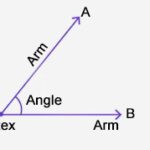What is an irrational number? Understanding these numbers can be tricky, but WHAT.EDU.VN is here to help! An irrational number is a real number that cannot be expressed as a simple fraction. Discover the secrets of irrational numbers, their properties, and examples, and get your questions answered instantly on WHAT.EDU.VN. Explore non-repeating decimals, non-terminating decimals, and real numbers.
1. Understanding What is an Irrational Number
An irrational number is a real number that cannot be written as a ratio of two integers. This means it cannot be expressed in the form p/q, where p and q are integers and q is not equal to zero. Another key characteristic is that the decimal representation of an irrational number is non-terminating and non-repeating. This implies that the decimal digits go on forever without repeating any pattern. If you’re looking for crystal-clear explanations and want to deepen your understanding, remember that WHAT.EDU.VN is ready to tackle any question, big or small, related to irrational numbers or any other topic.
1.1. The Meaning of Irrational
The term “irrational” signifies the absence of a ratio. Essentially, an irrational number is one for which you cannot find a simple fraction to represent it exactly. These numbers defy being neatly fitted into a ratio of two whole numbers. For any questions you have, WHAT.EDU.VN provides quick, free answers, offering clarity and support for all your learning needs.
1.2. Examples of Irrational Numbers
There are several well-known examples of irrational numbers:
- Pi (π): Approximately 3.14159265…, pi represents the ratio of a circle’s circumference to its diameter.
- Square Root of 2 (√2): Approximately 1.41421356…, it is the length of the diagonal of a square with sides of length 1.
- Square Root of 3 (√3): Approximately 1.73205081…, it is another common irrational number.
- Square Root of 5 (√5): Approximately 2.23606797…, it demonstrates that not all square roots are rational.
- Euler’s Number (e): Approximately 2.718281…, it is the base of the natural logarithm.
- 0.1010010001…: This non-repeating, non-terminating decimal is also irrational.
If you’re curious to learn more or have specific questions about these examples, don’t hesitate to ask on WHAT.EDU.VN, where you can get expert insights without any cost.
1.3. Identifying Irrational Numbers
A real number is considered irrational if it cannot be expressed in the form p/q, where p and q are integers, and q is not equal to zero. Square roots of numbers that are not perfect squares, like √2 and √3, are classic examples. WHAT.EDU.VN helps you easily identify and understand these numbers.
2. The Symbol for Irrational Numbers
While there isn’t a universally standardized symbol for irrational numbers, they are often represented using the symbol “P.” This is because irrational numbers are defined in relation to real numbers (R) and rational numbers (Q). It’s often depicted as the set difference between real numbers and rational numbers: R – Q or RQ. At WHAT.EDU.VN, you can easily find resources and explanations for various mathematical symbols and notations.
3. Properties of Irrational Numbers
Irrational numbers, as subsets of real numbers, adhere to many properties of the real number system. Here are some key properties:
-
Addition of Rational and Irrational Numbers: The sum of an irrational number and a rational number always results in an irrational number.
-
Multiplication of Rational and Irrational Numbers: Multiplying a non-zero rational number by an irrational number yields an irrational number.
-
LCM of Irrational Numbers: The Least Common Multiple (LCM) of two irrational numbers may or may not exist.
-
Closure Under Addition and Multiplication: The sum or product of two irrational numbers can be either rational or irrational.
-
Non-Closure Under Multiplication: Unlike rational numbers, irrational numbers are not closed under multiplication.
For more detailed explanations or examples, simply post your questions on WHAT.EDU.VN and get clear answers promptly.
4. A List of Irrational Numbers
Some of the most famous irrational numbers include Pi (π), Euler’s number (e), and the Golden Ratio (φ). Additionally, many square roots and cube roots are irrational, though not all. For instance, √3 is irrational, whereas √4 is rational because 4 is a perfect square (4 = 2 x 2, so √4 = 2).
| Irrational Number | Value |
|---|---|
| Pi (π) | 3.14159265358979… |
| Euler’s Number (e) | 2.71828182845904… |
| Golden Ratio (φ) | 1.61803398874989… |
| Square Root of 2 | 1.4142135623730951… |
| Square Root of 3 | 1.7320508075688772… |
If you’re seeking additional examples or want to explore specific irrational numbers, WHAT.EDU.VN is always available to provide comprehensive information.
 Irrational Numbers Explained
Irrational Numbers Explained
5. Are Irrational Numbers Real Numbers?
Yes, all irrational numbers are considered real numbers in mathematics. What distinguishes them is that they cannot be expressed as a ratio of two integers. This means that square roots that are not perfect squares, for example, will always result in an irrational number. For any queries or clarifications regarding the relationship between real and irrational numbers, WHAT.EDU.VN offers reliable and instant assistance.
6. Sum and Product of Two Irrational Numbers
Let’s delve deeper into how irrational numbers behave when added or multiplied.
6.1. Product of Two Irrational Numbers
The product of two irrational numbers can sometimes be rational or irrational. For example, √2 is irrational, but √2 multiplied by itself (√2 x √2) equals 2, which is rational. On the other hand, multiplying π by itself (π x π) results in π², which remains irrational.
6.2. Sum of Two Irrational Numbers
Similar to their product, the sum of two irrational numbers can also be either rational or irrational. Adding 3√2 and 4√3 gives an irrational sum. However, (3 + 4√2) + (-4√2) equals 3, a rational number.
| Operation | Example | Result |
|---|---|---|
| Product | √2 x √2 | 2 (Rational) |
| Product | π x π | π² (Irrational) |
| Sum | 3√2 + 4√3 | Irrational |
| Sum | (3 + 4√2) + (-4√2) | 3 (Rational) |
For more insights and examples, simply ask your questions on WHAT.EDU.VN and get detailed explanations.
7. Irrational Number Theorem and Proof
The following theorem is fundamental in proving statements about irrational numbers:
Theorem: If p is a prime number and a² is divisible by p, where a is any positive integer, then p also divides a.
Proof:
Using the Fundamental Theorem of Arithmetic, any positive integer a can be expressed as a product of its prime factors:
a = p1 × p2 × p3 × … × pn
where p1, p2, p3, …, pn are prime factors of a.
Squaring both sides:
a² = (p1 × p2 × p3 × … × pn) × (p1 × p2 × p3 × … × pn)
a² = (p1)² × (p2)² × (p3)² × … × (pn)²
The prime factorization of a natural number is unique (Fundamental Theorem of Arithmetic). If p is a prime number and a factor of a², then p is one of p1, p2, p3, …, pn, thus p is also a factor of a.
Therefore, if a² is divisible by p, then p also divides a.
Using this theorem, we can prove that √2 is irrational.
7.1. Proof that √2 is Irrational
Assume, for the sake of contradiction, that √2 is rational. Then it can be written as:
√2 = p/q
where p and q are co-prime integers (i.e., their only common factor is 1) and q ≠ 0.
Squaring both sides:
2 = p²/q²
p² = 2q²
From the theorem above, if 2 is a prime factor of p², then 2 is also a prime factor of p.
So, p = 2c, where c is an integer. Substituting this into the equation:
(2c)² = 2q²
4c² = 2q²
q² = 2c²
This implies that 2 is a prime factor of q² and thus also a prime factor of q.
This contradicts the initial assumption that p and q are co-prime, as they both have 2 as a common factor. Therefore, √2 is irrational.
For further assistance in understanding this proof or any other mathematical concepts, feel free to ask questions on WHAT.EDU.VN.
8. How to Find an Irrational Number
To find irrational numbers between two given numbers, consider the following:
For example, to find irrational numbers between 2 and 3:
We know √4 = 2 and √9 = 3. Therefore, irrational numbers between 2 and 3 include √5, √6, √7, and √8, since these are not perfect squares and cannot be simplified further.
| Number | Square Root | Rational/Irrational |
|---|---|---|
| 4 | √4 = 2 | Rational |
| 5 | √5 ≈ 2.236 | Irrational |
| 6 | √6 ≈ 2.449 | Irrational |
| 7 | √7 ≈ 2.646 | Irrational |
| 8 | √8 ≈ 2.828 | Irrational |
| 9 | √9 = 3 | Rational |
For more examples and personalized help with finding irrational numbers, WHAT.EDU.VN is at your service.
9. Solved Examples
Let’s go through some examples to solidify your understanding.
Question 1: Identify which of the following are Rational Numbers or Irrational Numbers:
2, -0.45678…, 6.5, √3, √2
Solution:
Rational Numbers: 2, 6.5 (terminating decimals)
Irrational Numbers: -0.45678…, √3, √2 (non-terminating, non-repeating decimals)
Question 2: Determine if the below numbers are rational or irrational:
2, 5/11, -5.12, 0.31
Solution:
Since the decimal expansion of a rational number either terminates or repeats, 2, 5/11, -5.12, and 0.31 are all rational numbers.
For more practice questions and comprehensive solutions, post your queries on WHAT.EDU.VN for immediate assistance.
10. Frequently Asked Questions (FAQs) on Irrational Numbers
Here are some frequently asked questions about irrational numbers:
10.1. What is an irrational number? Give an example.
An irrational number is a real number that cannot be expressed as a simple fraction or ratio of two integers. Examples include √2, √3, π (Pi).
10.2. Are integers irrational numbers?
No, integers are rational numbers, not irrational. All integers, whether positive, negative, or zero, can be written in the form of p/q.
10.3. Is an irrational number a real number?
Yes, an irrational number is a real number and can be represented on the real number line.
10.4. What are five examples of irrational numbers?
Examples include √8, √11, √50, Euler’s Number (e ≈ 2.718281), and the Golden Ratio (φ ≈ 1.618034).
10.5. What are the main irrational numbers?
The most common irrational numbers are Pi (π), Euler’s Number (e), and the Golden Ratio (φ), along with square roots of non-perfect squares.
| Question | Answer |
|---|---|
| What is an irrational number? | A real number that cannot be expressed as a simple fraction. |
| Are integers irrational numbers? | No, integers are rational numbers. |
| Is an irrational number a real number? | Yes, irrational numbers are real numbers. |
| Give five examples of irrational numbers. | √8, √11, √50, Euler’s Number (e), Golden Ratio (φ) |
| What are the main irrational numbers? | Pi (π), Euler’s Number (e), and the Golden Ratio (φ). |
For any additional questions or further clarification on irrational numbers, WHAT.EDU.VN is available to provide expert answers for free.
Do you have more questions or need personalized assistance? Visit WHAT.EDU.VN today to ask any question and get free answers from knowledgeable experts. We’re here to make learning easy and accessible for everyone. Our platform is designed to provide quick, accurate, and helpful information, connecting you with a community of experts ready to support your learning journey. Don’t hesitate—ask now and discover the power of free knowledge!
Contact Us:
Address: 888 Question City Plaza, Seattle, WA 98101, United States
WhatsApp: +1 (206) 555-7890
Website: what.edu.vn
We look forward to helping you achieve your learning goals!
